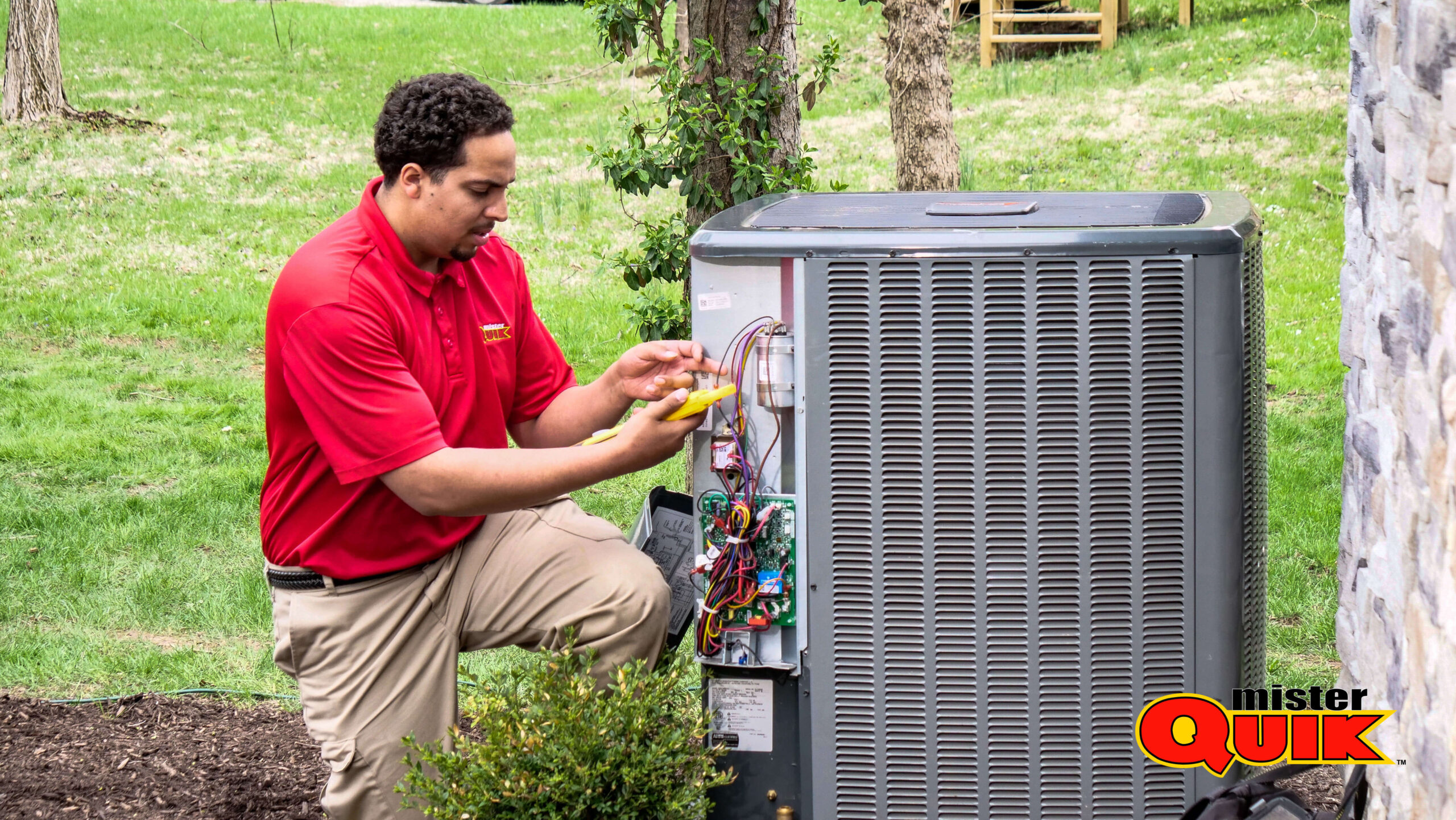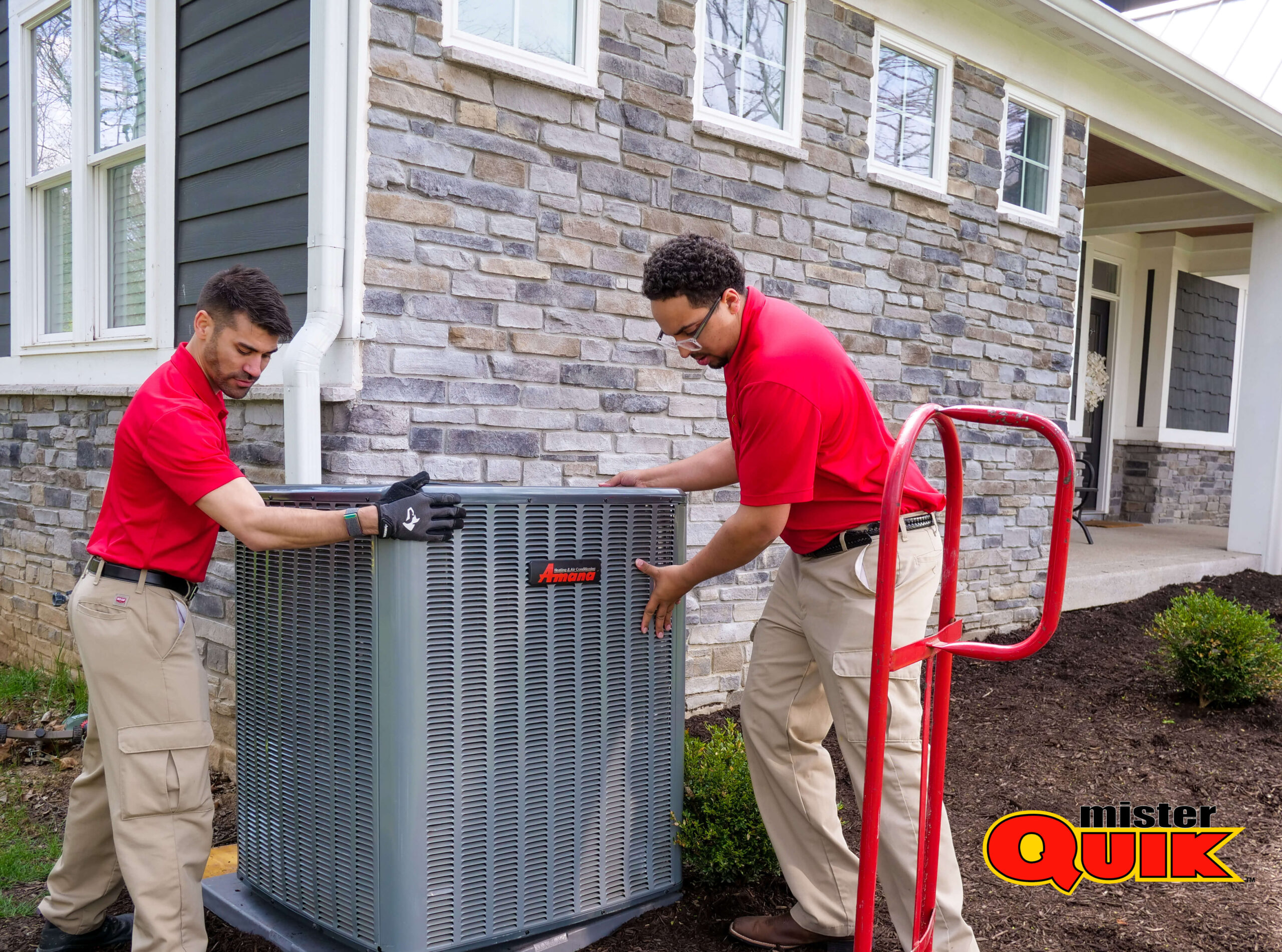Quality Anderson Air Handler Service
Schedule on your own without making a call. Click the button below to get started!

When Should I Replace My Air Handler?
If you’re wondering when to replace your air handler, here are some signs to watch for:
1. Age: Typically, air handlers have a lifespan of 10-15 years. If yours is approaching or exceeding this timeframe, it may be time for a replacement, especially if you’re experiencing frequent issues.
2. Efficiency: Older air handlers may not be as energy-efficient as newer models. If you notice a significant increase in your energy bills or your system struggles to maintain consistent temperatures, it could be a sign that your air handler is losing efficiency.
3. Repairs: Constant repairs can be a telltale sign that your air handler is on its last legs. If you find yourself calling for repairs frequently, it might be more cost-effective in the long run to invest in a new Anderson air handler.
4. Noises: Unusual noises coming from your air handler, such as banging, rattling, or grinding sounds, could indicate internal issues that require attention. If these noises persist despite repairs, it may be time for a replacement.
5. Comfort: If you’re experiencing uneven heating or cooling throughout your home or indoor air quality issues despite regular maintenance, your air handler may be struggling to perform effectively.
Replacing your air handler with a new Anderson air handler from Mister Quik Home Services can improve efficiency, comfort, and indoor air quality in your home.
The Different Types Of Air Handlers
When it comes to air handlers, there are several types to choose from, each serving specific purposes in your HVAC system. Here are the different types of air handlers to consider:
These are the most common type of air handlers and operate at a constant speed, providing a consistent flow of air throughout your home. While they are affordable, they may not offer the same level of energy efficiency as other types.
These air handlers can adjust their speed based on the heating or cooling needs of your home. They operate at lower speeds most of the time, which can lead to quieter operation, better humidity control, and improved energy efficiency.
Similar to variable-speed air handlers, multi-speed air handlers offer flexibility in operation. They have multiple speed settings that you can choose from based on your comfort preferences and energy-saving goals.
These advanced air handlers continuously adjust their speed and airflow to maintain precise temperature levels in your home. They provide the highest level of comfort and energy efficiency but tend to be more expensive upfront.
Most often, air handlers are located in the attic, basement or a dedicated closet, and may closely resemble the shape of a gas furnace. As its name suggests, an air handler “handles” the air inside your home and delivers warm or cool indoor air throughout your entire home.
An air handler is an essential component of many HVAC systems, but it’s also a cause of confusion for many homeowners. Although air handlers work in tandem with air conditioners and heat pumps, they perform different functions.
The air handler is the large metal box containing the fan and fan motor. Typically, the unit would be found in a basement, an attic, or sometimes in the back of a closet. Once it is located, look for a slot where an air filter should fit.
If you own a furnace, you don’t need a dedicated air handler because the furnace blower works to circulate air, both heated air and cooled air from your air conditioning system throughout your home. If you have a heat pump and not a furnace, then you may need a dedicated air handler to circulate the air.
Although there are multiple ways and places you can install an air handler, the unit connects to the rest of your home through a series of supply and return ventilation ducts that recirculate the air in each room.
What's The Difference Between A Furnace And An Air Handler?
If you’re wondering about the variances between a furnace and an air handler, we’ve got you covered! Here’s a simple breakdown:


1. Functionality:
- Furnace: Furnaces primarily generate and distribute heated air throughout your home using combustion or electric resistance.
- Air Handler: Air handlers, on the other hand, focus on circulating both heated and cooled air. They’re often part of a heat pump or air conditioning system, aiding in temperature regulation.
2. Components:
- Furnace: Furnaces consist of a heat exchanger, burner, blower, and ductwork to deliver warm air.
- Air Handler: Air handlers include components like a blower motor, evaporator coil, and filter to circulate conditioned air efficiently.
3. Heating vs. Cooling:
- Furnace: Furnaces are solely designed for heating purposes and may require a separate cooling system, like an air conditioner or heat pump, for summertime comfort.
- Air Handler: Air handlers are versatile and can be used for both heating and cooling when paired with compatible systems, offering year-round climate control.
4. Energy Efficiency:
- Furnace: Furnaces can vary in efficiency depending on the fuel source and technology used.
- Air Handler: Air Handlers, known for their energy-efficient operation, work seamlessly with compatible HVAC systems to optimize performance and reduce energy consumption.
5. Installation and Maintenance:
- Furnace: Furnaces are typically installed in a central location, such as a basement or utility closet, and require periodic maintenance to ensure safety and efficiency.
- Air Handler: Air Handlers are commonly installed in conjunction with outdoor units and need regular maintenance to uphold performance and indoor air quality.
Where Is An Air Handler Located?
Wondering where you can find an air handler in your home? Let’s shed some light on its typical location:
The Air Handler is typically installed indoors, often in spaces like closets, attics, basements, or utility rooms.


In many homes, the Air Handler is positioned near the furnace or heat pump as part of the HVAC system.
The size of the Air Handler and available space in your home dictate its placement. It should be positioned where it can efficiently circulate air throughout your living spaces.
Accessibility is essential for maintenance and repairs, so the Air Handler is usually installed in a location that allows technicians easy access.


The Air Handler is connected to ductwork, allowing it to distribute conditioned air to different rooms in your home.
What's The Difference Between An Air Conditioner And An Air Handler?
Curious about the contrasts between an air conditioner and an air handler? Let’s break it down simply:
1. Cooling Mechanism:
- Air Conditioner: Air conditioners focus solely on cooling your home by removing heat from indoor air and transferring it outside.
- Air Handler: Air Handlers are part of a larger HVAC system and work alongside heat pumps or air conditioning units to circulate cooled air throughout your home.
2. Components:
- Air Conditioner: Air conditioners comprise components like a compressor, evaporator coil, condenser coil, and refrigerant to facilitate the cooling process.
- Air Handler: Air Handlers include a blower motor, evaporator coil, filter, and sometimes a heating element to distribute conditioned air efficiently.
3. Cooling vs. Circulation:
- Air Conditioner: Air conditioners primarily cool the air and remove humidity, maintaining a comfortable indoor temperature during hot weather.
- Air Handler: Air Handlers focus on circulating conditioned air from the HVAC system throughout your home, ensuring consistent comfort levels.
4.Heating Capability:
- Air Conditioner: Air conditioners do not provide heating capabilities and may require a separate heating system, such as a furnace or heat pump, for wintertime warmth.
- Air Handler: Air Handlers can be paired with compatible heat pumps to provide both cooling and heating, offering year-round climate control.
5. Versatility and Efficiency
- Air Conditioner: Air conditioners vary in efficiency and may have limited functionality compared to Anderson Air Handlers.
- Air Handler: Air Handlers are known for their versatility and energy-efficient operation when integrated into a comprehensive HVAC system.
Understanding the differences between air conditioners and Anderson Air Handlers can help you make informed decisions about your home’s cooling and heating needs.
Components of An Air Handler
An air handler is a crucial part of your HVAC system, responsible for circulating air throughout your home. Understanding its components can help you maintain your system and ensure optimal performance:
The blower motor is the heart of the air handler, powering the fan that moves air through the system. It's essential for maintaining airflow and distributing heated or cooled air evenly.
This coil helps cool the air in your home during hot weather. As warm air passes over the coil, the refrigerant inside absorbs heat, cooling the air before it's distributed through your home.
The air filter traps dust, dirt, and other particles from the air before it enters your HVAC system. Regularly replacing or cleaning the filter is crucial for maintaining indoor air quality and preventing damage to the system.
In systems that provide both heating and cooling, like heat pumps, the heat exchanger helps transfer heat between the refrigerant and the air, allowing for efficient heating or cooling as needed.
The ductwork is the network of channels that carries air to and from the air handler. Properly sized and sealed ductwork ensures efficient airflow and prevents energy loss.
During cooling, the evaporator coil produces condensation, which collects in the drain pan and is drained away through the drain line. Keeping these components clean and clear prevents water damage and mold growth.
Understanding these components can help you troubleshoot issues and communicate effectively with HVAC professionals when it comes to maintaining or repairing your air handler. For expert service and installation of Anderson air handlers, trust Mister Quik Home Services.
Troubleshoot Checklist:
- Check the age of your air handler. If it’s approaching or exceeding 10-15 years, consider replacement, especially if frequent issues arise.
- Evaluate the historical performance of the air handler to determine if it’s becoming less reliable with age.
- Monitor your energy bills for significant increases, which could indicate decreased efficiency in your air handler.
- Note any inconsistencies in temperature control throughout your home, as this may signal decreased efficiency.
- Keep track of the frequency of repairs needed for your air handler. Excessive repairs may suggest it’s time for a replacement.
- Assess the cost of ongoing repairs compared to investing in a new Anderson Air Handler for long-term savings.
- Listen for unusual sounds such as banging, rattling, or grinding coming from the air handler, as these could indicate internal issues.
- Pay attention to whether these noises persist despite attempted repairs, as this may necessitate replacement.
- Monitor the consistency of heating or cooling throughout your home. Uneven temperatures could indicate a struggling air handler.
- Be mindful of indoor air quality issues despite regular maintenance, as this could indicate reduced effectiveness of your air handler.







